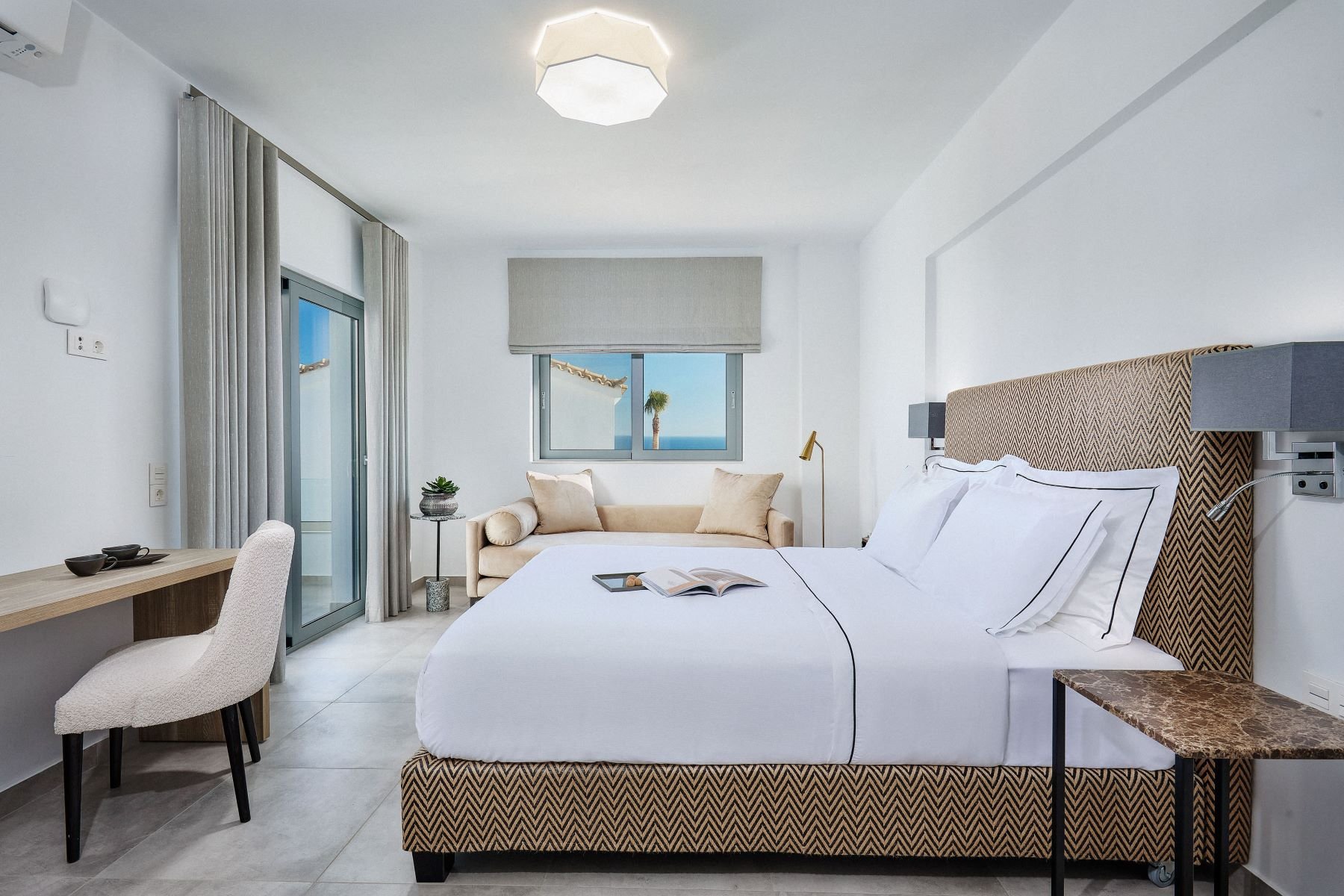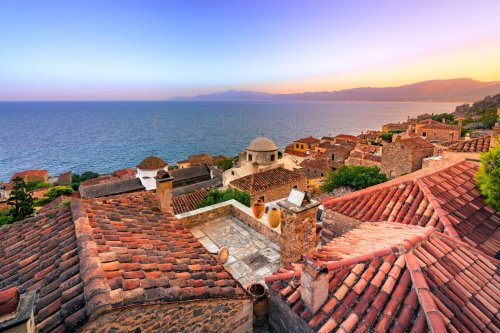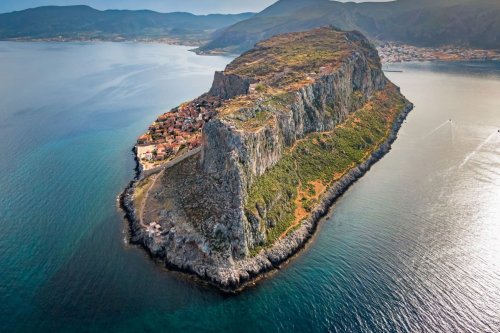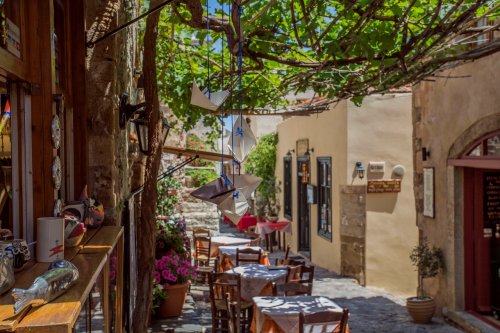Church of Agia Sophia
Church of Agia Sophia
At the edge of the top of the steep rock, at the acropolis of Monemvasia, is the impressive church of Agia Sophia, the most important monument of the Castle and one of the most important of the Peloponnese.
Our knowledge regarding its history is limited due to the absence of relevant inscriptions and written sources.
At older times the church was related to emperor Andronikos II Palaiologos (1282-1328), but it is proven that it is older. According to the latest research, it dates from 1150 and is related to the successful repulsion of the Normans in 1147.
Initially it was dedicated to Panagia Hodegetria, but we don’t know if it was the catholicon of a monastery or a parish church. In the years of the first Venetian domination (1463-1540) it passed into Catholic hands and during the Turkish Occupation (1540-1690) it was converted into a mosque.
During the Second Venetian Occupation (1690-1715) it became a church once again, the catholicon of a monastery dedicated to Madonna del Carmine, and then they added the two-storey exonarthex along it western side.
In 1715 it was converted into a mosque again, until 1821, when the castle was surrounded to the Greeks, who demolished the minaret, which was on the southwestern corner and dedicated the church to Agia Sophia.
The church belongs to the so-called “continental” octagonal, domed type and is considered one of its most beautiful examples.
A characteristic of this architectural type is that the main church is a unified area, since the eight pillars that support the dome, are towards the edges. On the four corners of the mainly square church there are chapels, on the eastern side there is a tripartite bema and on the western a narthex. The masonry is carefully done with the cloisonné system.
At the interior of the church the fragments of wall paintings, of exceptional artistic quality, date from the 12th century.
The wall paintings at the prosthesis with scenes from the life of Agios Nikolaos are related to the snatching of the saint’s relics, which were stolen by Italian merchants from Myra in Lycia in 1087 and, while they transferred them to Bari, their ship stopped at the port of the castle.
Of exceptional technique is also the surviving sculpted marble decoration, an important example of sculpture of the 12th century.
Accommodation in Peloponnese is by itself an interesting concept

Accommodation in Peloponnese is by itself an interesting concept, which can be a great incentive for a visit, as it includes a huge range of options, both in luxury stay and more to the budget-friendly side, options that satisfy even the most demanding visitors. Accommodation in Peloponnese
TAGS : Hotels in Laconia, Travel to Laconia, Accommodation in Laconia

Churches




